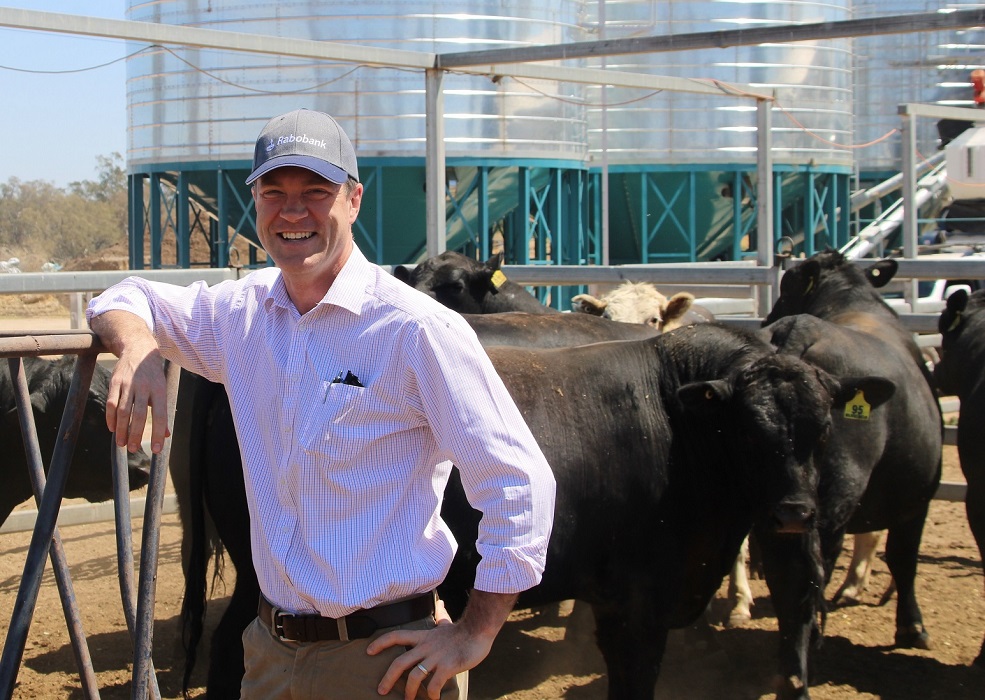
Rabobank senior animal protein analyst Angus Gidley-Baird
A GROWING focus on reducing greenhouse gas emissions around the world is driving a shift in the red meat sector, but it will be the market, rather than regulators, motivating change, according to a newly-released industry report.
The market-based approach expected to shift the industry towards reduced GHG emissions requires incentives to help stimulate change, global food and agribusiness specialist Rabobank says in the report Unlocking Climate-Friendly Meat; Supply Chain Initiatives Will Be Key.
Rabobank senior animal protein analyst Angus Gidley-Baird said price premiums for producers were an obvious incentive for change; however, he believed price premiums for low-GHG emission beef would be limited.
“While sustainability ranks highly amongst a growing number of consumers, they don’t necessarily want to pay higher prices for the benefit,” he said.
“Surveys conducted by Meat & Livestock Australia show that, when it comes to the actual purchase, the most common drivers for protein choice are freshness, value, and ease of preparation.”
Despite the potential lack of price premium, Mr Gidley-Baird said there was still significant value that could be captured in the low emissions red meat supply chain, including opportunities for productivity gains, generation of carbon credits, plus access to markets and capital.
The report said while challenges remain, the trend towards climate-friendly meat will also offer opportunity for meat industry players.
As community demand for better environmental outcomes continues to gain momentum both globally and locally, opportunities exist for red meat supply chain stakeholders to implement programs aimed at reducing greenhouse gas emissions (GHG) while retaining consumer trust, and promoting social acceptance, the report says.
But measuring emissions in the red meat supply chain remained one of the most challenging aspects confronting the industry.
Mr Gidley-Baird said the use of tailored programs with certain specifications in dedicated supply chains – similar to current grass-fed and organic programs – would allow stakeholders to produce lower-emission red meat without necessarily undertaking onerous emission measurements.
“Instead of having to measure on-farm emissions, livestock owners could participate in a dedicated supply chain with a program that uses a technology or process that has demonstrated emission benefits,” he said.
Some of these technologies, such as using methane-reducing feed supplements, implementation of emission-reducing farming practices or refined genetics, were already being commercially applied, and Mr Gidley-Baird said it was only a matter of time before these innovations were integrated into dedicated supply chains.
Challenges measuring GHG emissions
A challenge for the red meat supply chain lies in bringing the two ends of the supply chain together, Mr Gidley-Baird said.
“In the red meat supply chain, the bulk of the emissions occur at the production end of the supply chain, yet it is society – in this case consumers – that represent one of the key proponents for emissions reductions,” he said.
Communicating emission reductions through the supply chain was essential to connect the two ends of the supply chain, and required either the use of a trusted program or brand, or the measurement and reporting of emissions.
However, measuring livestock GHG emissions in a broadscale approach, he said, was perhaps the greatest challenge the industry faced.
The diversity of operations and production systems, the interactivity with the landscape, the whole of life-cycle consideration, lack of data and harmonisation of methodologies all complicated the measurement process.
“Without the ability to easily, accurately and consistently measure emissions, it makes it difficult for broad based policy instruments to be applied, which is another reason why we believe a market-based approach is more likely to lead change,” Mr Gidley-Baird said.
While a number of proactive governments around the world had begun regulating to reduce emissions in the red meat industry, he said, it would actually be industry players, using dedicated supply chains in a market-based approach, who would emerge as the key drivers of change.
And, while some governments had set a 2030 target for change, Mr Gidley-Baird believed this market-based approach would generate results faster, and said it was entirely possible that supply chains could implement changes in the next two to three years.

Dr Frank Mitloehner from Davis University in California has a wealth of information and researched evidence on GHG emissions from livestock, focused mainly on beef and dairy production. Below is a link to a lot of his work.
https://www.researchgate.net/profile/Frank_Mitloehner